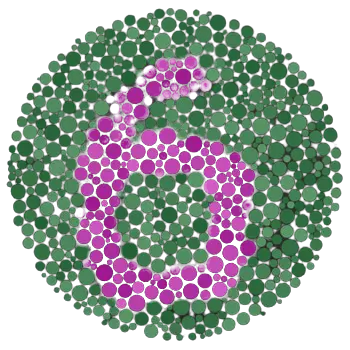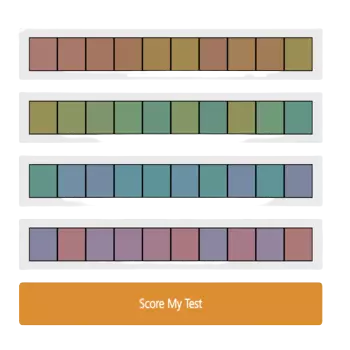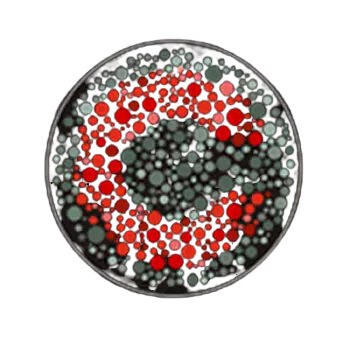Ishihara Test
The Ishihara color test will be used to check Red-Green color blindness. Our test will show you the number of series of circles with other colored dots of different colors and numbers.
WHAT IS ISHIHARA TEST?
The multiple series of colored plates are designed to provide a test that gives a fast and accurate assessment of color vision deficiency in your eyes. It is the standard form of color vision deficiency.
There are 38 plates in the Ishihara blind test, where each plate contains dots of different sizes and colors. All beads on plates are arranged in specific patterns to form numbers or figures that people with normal color vision can see.
Most cases of intrinsic color vision deficiency are defined by a Red-Green lack which may be of two types; first, a protan type which may be entire (protanopia) or partial (protanomalia), and along with a deutan type which may be absolute (deuteranopia) or partial (duteranomalia)
EXPLAINATION TO ISHIHARA PLATES
-
Plate No. 1 - Whether with normal or defective color vision deficiency, a person will read the figure “12 correctly”. This plate is used mainly for an elementary explanation of the test process to the person.
-
Plate No. 2 - The average person will see “8” and those with Red-Green deficiencies “3.”.
-
Plate No. 3 - The average person will see “5” and those who have Red-Green deficiencies “2”.
-
Plate No. 4 - The average person will see “29” and those with Red-Green deficiencies “70”.
-
Plate No. 5 - The average person will see “74” and those with Red-Green deficiencies “21”.
-
Plate No (6-7) - Correctly readable by the average person, but hard to read for those with Red-Green deficiencies.
-
Plate No. 8 - “2” for an average person but doubtful for those with Red-Green deficiencies.
-
Plate No. 9 - The average person can barely read it, but most of those with Red-Green deficiencies see the figure “2” in it.
-
Plate No. 10 - The average person can usually see the plates "16", but most of those with Red-Green deficiencies can't.
-
Plate No. 11 - The average person and those with mild Red-Green deficiencies see the plates “35,” but protanopia and strong protanomalia will see “5” only, & deuteranopia & strong deuteranomalia will see “3”.
-
Plate No. 13 - The average person and those who have mild Red-Green deficiencies see the plates “96,” but protanopia and strong protanomalia will see “6” only, & deuteranopia and strong deuteranomalia “9”.
HOW TO USE THE TEST
The plates are designed to be visible correctly on a screen that is lit adequately with proper brightness.
In the Ishihara test, several colored plates are shown to the subject, and the person needs to identify the correct object from the plates.
After starting the test, On every attempt of the question subject needs to choose the correct option from the screening test as per shown in the Ishihara plates, to identify the issue is not color blind.
The digits which are seen on plates are stated, & each option should be choose without more than three seconds delay for accurate results.
After the end of the test, The result will be shown how many correct and the wrong answer are given, and it will give a short description of your color vision accuracy.
Other Related Tests
Checkout our other related tests for better understanding about your color vision perception.















